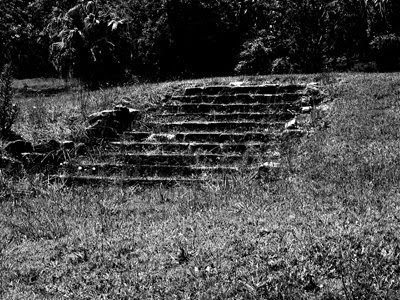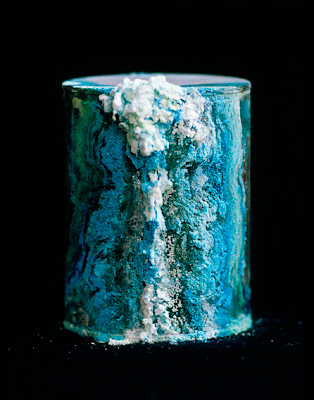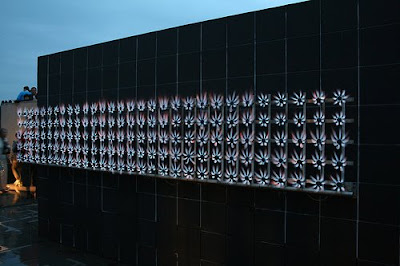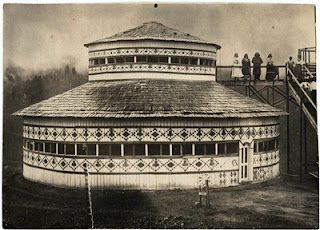 The saying of the rosary, the raking of gravel at Ryoan-ji, the chanting of a mantra: all rituals confined to the traditional, sacred world. Ritual text proposes a secular form of meditation, where the perambulations of a medieval monk coincide with the instantaneous, electronic, digital alphabet ... the text from the profane world of pixels, or LEDs, announcing a bus destination, scrolling out the stock exchange updates ... but here the walker paces out the letters on a 'pixel' screen of trees. The regular grid of trees allows the walker to walk their words, forming letters with their feet, disappearing in their wake as they walk, as in the words of Paul Auster (see post below), It was like drawing a picture in the air with your finger. There is no result, no trace to mark what you have done.
The saying of the rosary, the raking of gravel at Ryoan-ji, the chanting of a mantra: all rituals confined to the traditional, sacred world. Ritual text proposes a secular form of meditation, where the perambulations of a medieval monk coincide with the instantaneous, electronic, digital alphabet ... the text from the profane world of pixels, or LEDs, announcing a bus destination, scrolling out the stock exchange updates ... but here the walker paces out the letters on a 'pixel' screen of trees. The regular grid of trees allows the walker to walk their words, forming letters with their feet, disappearing in their wake as they walk, as in the words of Paul Auster (see post below), It was like drawing a picture in the air with your finger. There is no result, no trace to mark what you have done. 
No trace, unless you are followed. Textual voyeurs may lurk within the grid of cypresses, surreptitiously recording the secret, personal tracings.

Landscape becomes theatre. Impromptu dances occur as the walkers merge and separate, each engaged in their own world of words.

 It was like drawing a picture in the air with your finger. There is no result, no trace to mark what you have done.
It was like drawing a picture in the air with your finger. There is no result, no trace to mark what you have done.













 Seagulls, November, J Bowring
Seagulls, November, J Bowring

 From Seizure, Roger Hiorns, 2008
From Seizure, Roger Hiorns, 2008
 Yves Klein, Fire Wall
Yves Klein, Fire Wall
 Michael Van Valkenburgh, Ice Walls, Radcliffe, Cambridge MA
Michael Van Valkenburgh, Ice Walls, Radcliffe, Cambridge MA



















